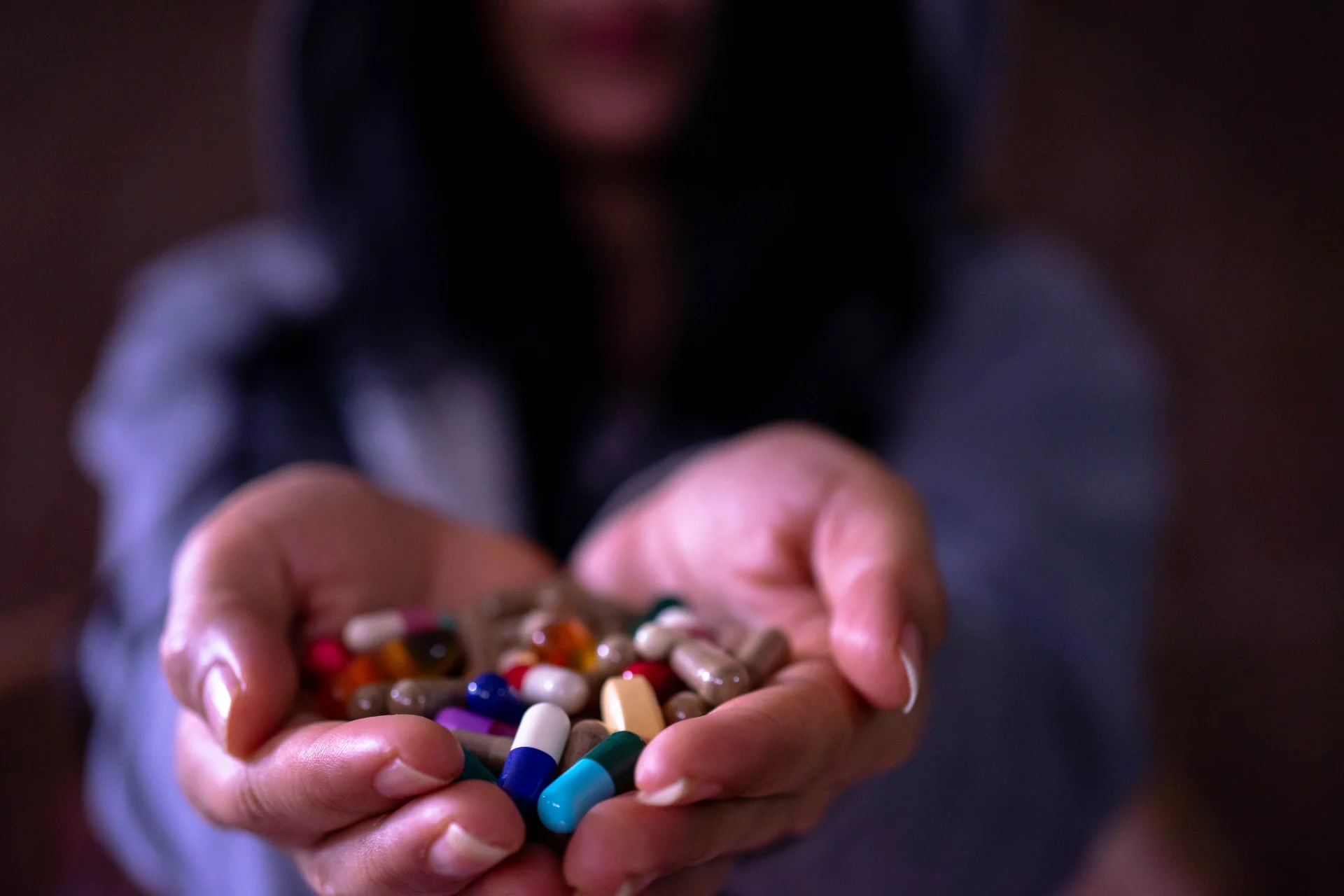Antidepressant Addiction Treatment in Long Island
Comprehensive guide to antidepressant misuse and dependence in Long Island how it develops, safe tapering, treatment levels (residential to outpatient), evidence-based therapies, medication strategies, and how Long Island Addiction Resources connects you with vetted, person-centered programs.
Covered by most insurance plans
Available to help you 24/7
Table of Contents
Antidepressants don’t produce a classic “high,” but people can still develop dependence, misuse them in pursuit of stimulant-like effects, or struggle with withdrawal-type symptoms when stopping abruptly. A thoughtful, stepwise plan that addresses biology, psychology, and environment is the safest route back to stability.

What counts as antidepressant misuse?
- Taking larger or more frequent doses than prescribed to “feel” an effect sooner.
- Combining with alcohol, benzodiazepines, stimulants, or opioids to change the drug’s impact.
- Doctor-shopping for overlapping prescriptions, using others’ medications, or ordering online without oversight.
- Stopping and restarting repeatedly, chasing short-term relief while worsening rebound symptoms.
Antidepressant classes & why they matter for treatment
SSRIs (e.g., sertraline, fluoxetine): Increase serotonin; discontinuation can cause dizziness, “brain zaps,” insomnia, and irritability if stopped suddenly.
SNRIs (e.g., venlafaxine, duloxetine): Affect serotonin and norepinephrine; missed doses can trigger pronounced withdrawal-type symptoms.
TCAs (e.g., amitriptyline, nortriptyline): Older agents with anticholinergic effects; overdoses can be medically dangerous and require careful monitoring.
MAOIs (e.g., phenelzine, tranylcypromine): Require dietary and drug-interaction precautions; transitions must be planned to avoid serotonin syndrome.
Atypicals (e.g., bupropion, mirtazapine, trazodone, vortioxetine): Distinct side-effect profiles that guide taper strategies and alternatives.

Why dependence happens (and what it looks like)
- Neuroadaptation: The brain adjusts to steady receptor activity; sudden removal can produce discontinuation symptoms.
- Psychological reinforcement: Relief from anxiety, insomnia, or low mood can drive dose escalation in search of faster effects.
- Risk factors: Long-term use, prior substance misuse, co-occurring anxiety/PTSD, high-stress environments, and genetic vulnerability.
Common physical signs: “Electric shock” sensations, flu-like symptoms, nausea, dizziness, sleep disruption. Mental/behavioral signs: Rebound depression/anxiety, agitation, mood lability, compulsive redosing, isolating from supports.
New York treatment pathways (matched to need)
Medical detox & stabilization (when indicated)
While classic “detox” is less common for antidepressants than for alcohol/benzodiazepines, supervised stabilization can be appropriate for severe misuse, complex polypharmacy, or high suicide risk. Expect medical monitoring, safety planning, sleep support, and initiation of a structured taper.
Residential treatment
24/7, structured settings for individuals with unsafe housing, repeated relapse into misuse, or significant co-occurring disorders. Programming blends medication review, taper execution, trauma-informed therapy, and skills practice in a controlled environment.
Partial Hospitalization (PHP)
~20 hours/week of day programming with evening return home. Useful after inpatient/residential or when step-up support is needed to manage taper symptoms, mood instability, or complex medication changes.
Intensive Outpatient (IOP)
10–15 hours/week across multiple days, day or evening tracks. Focus on relapse prevention, coping skills, medication management check-ins, and peer support while maintaining work, school, or caregiving.
Outpatient psychiatry & therapy
1–2 visits/week for individualized taper plans, monitoring, psychotherapy, and coordinated care with primary care and specialists.
Core components of effective care
Evidence-based psychotherapies
- CBT: Restructure catastrophic thinking (“I can’t sleep without extra pills”), plan behavioral activation, and target compulsive dose-escalation cycles.
- DBT skills: Distress tolerance, emotion regulation, and interpersonal effectiveness for high-arousal states that drive misuse.
- MI (Motivational Interviewing): Resolve ambivalence about tapering and align decisions with values (health, family, performance).
- Trauma-informed care: Address PTSD and adverse experiences that amplify anxiety and insomnia during taper.
Medication management done right
- Collaborative tapering: Small dose reductions (often every 2–6+ weeks) with “hold” periods based on symptoms, not the calendar.
- Switch strategies: Cross-taper to agents with smoother discontinuation (e.g., fluoxetine bridge), when clinically appropriate.
- Adjuncts: Sleep supports, non-addictive anxiolytics, and symptom-targeted medications used short-term with clear exit plans.
- Interaction safety: Alcohol, stimulants, MAOI/serotonergic interactions, and OTC/herbal combinations reviewed proactively.
Group & individual counseling
Peer groups reduce isolation, normalize discontinuation symptoms, and share practical taper tips. Individual sessions target personal triggers (work stress, grief, perfectionism) and build relapse-prevention plans.
Family involvement
Education for loved ones on what taper symptoms look like, how to support without policing, and how to help track sleep, mood, and safety.
Relapse prevention & aftercare
- Trigger map: Identify “red zones” (missed doses, alcohol use, high-pressure deadlines).
- Coping menu: Breathwork, exercise micro-doses, light therapy, structured wind-down routines, and digital hygiene for sleep.
- Follow-ups: Scheduled check-ins during vulnerable windows (holidays, season changes, med transitions).
Choosing the right New York program
- Clinical fit: Does the provider routinely manage complex tapers, polypharmacy, and co-occurring anxiety/PTSD?
- Access: Long Island–friendly hours, telehealth options, and coordination with your existing prescribers.
- Cost & coverage: Verify benefits for psychiatry, PHP/IOP, therapy, and labs; ask about sliding scales or payment plans.
- Transparency: Clear taper philosophy, safety protocols, and outcome tracking.
Reducing barriers & preventing future misuse
- Stigma reduction: Treat antidepressant dependence as a health issue, not a moral failing.
- Responsible prescribing: Single prescriber/pharmacy when possible, periodic medication reviews, and deprescribing when appropriate.
- Non-pharmacologic supports: CBT-I for insomnia, exercise plans, nutrition, mindfulness, and light exposure to address core symptoms that drive overuse.
Finding help on Long Island
Recovery is challenging and achievable. The right match between clinical needs, level of care, and personal preferences makes a real difference. Long Island Addiction Resources connects you with vetted programs across levels of care such as medical stabilization, residential treatment, partial hospitalization, intensive outpatient, standard outpatient, and recovery housing. We are a connector and guide, not a treatment facility, and we prioritize programs that provide person-centered, evidence-based care.
Start today
If you or a loved one are ready to end your alcohol and drug use, there are many recovery options available near you in Long Island
Are you ready to take back control over your life?
Making the decision to seek help is one of the hardest and bravest steps you can take. We know that the recovery process is not always easy—there may be challenges along the way—but every step forward brings you closer to a life free from the weight of addiction.
Find treatment options covered by insurance















Let today be
your Day 1
We'll get on a call, assess your health history, and verify your insurance. Today is Day 1. We can't wait to celebrate Day 1000 with you!
Fill out this simple form and we’ll call you right back.
Frequently Asked Questions
We'll get on a call, assess your health history, and verify your insurance. Today is Day 1. We can't wait to celebrate Day 1000 with you!
Are antidepressants actually addictive?
They don’t create a classic “high,” but people can develop dependence, misuse patterns, and discontinuation symptoms. Treatment focuses on safe tapering, coping skills, and addressing the reasons for overuse.
Do I need “detox” for antidepressants?
Most people don’t need inpatient detox; many succeed with a gradual outpatient taper. Higher-acuity settings are considered for severe misuse, multiple interacting meds, or safety concerns.
How long should a taper take?
It’s individualized. Many plans use small reductions every 2–6+ weeks, with pauses based on symptoms. Some agents (e.g., venlafaxine, paroxetine) may require slower, micro-taper approaches.
Can I switch to another medication instead of tapering off completely?
Sometimes. Clinicians may cross-taper or use a “fluoxetine bridge” to smooth discontinuation. Decisions depend on your diagnosis, response history, and side-effect profile.
What non-medication tools help during tapering?
CBT/DBT skills, CBT-I for sleep, exercise, mindfulness, light therapy, structured routines, and peer support groups reduce symptoms and lower relapse risk.
